It seems like you’re asking about a comparison between a York chiller VSD coolant (Variable Speed Drive) coolant system. However, there might be a misunderstanding in the terminology you’ve used. Let me clarify a few things:
- York Chiller: York is a brand that manufactures chillers and HVAC (Heating, Ventilation, and Air Conditioning) equipment. A chiller is a machine that removes heat from a liquid via a vapor-compression or absorption refrigeration cycle. It’s commonly used to cool large spaces, industrial processes, and various applications. A York chiller could have different features, capacities, and efficiencies depending on the specific model and technology used.
- York chiller VSD Coolant System: A VSD typically stands for Variable Speed Drive, which is a system that controls the speed of a motor or compressor to match the load requirements, resulting in energy savings and improved efficiency. However, “York chiller VSD Coolant system” doesn’t seem to be a standard term in this context. It’s important to differentiate between the coolant (the liquid used to absorb heat) and the equipment that’s used to circulate the coolant (like pumps or compressors).
If you’re looking to compare a York chiller with a cooling system that uses a Variable Speed Drive (VSD) to control coolant circulation, it’s essential to consider several factors:
- Efficiency: York chillers can vary in terms of efficiency, with some models designed to be more energy-efficient than others. The use of a VSD in a coolant system can also enhance efficiency by allowing the system to adjust its operation to match the cooling demand more precisely.
- Energy Savings: Both York chillers and York chiller VSD Coolant systems aim to save energy. A well-designed chiller coupled with a York chiller VSD Coolantt system can provide significant energy savings compared to fixed-speed systems.
- Cooling Capacity: The cooling capacity of the system is crucial to meet your specific requirements. York chillers come in various sizes and capacities, so you need to choose one that matches your cooling load. Incorporating a VSD can help fine-tune the cooling capacity based on real-time demand.
- Maintenance and Reliability: The maintenance requirements and overall reliability of the equipment are important considerations. High-quality chillers from reputable manufacturers like York are often designed for reliability and longevity. VSD systems also require maintenance but can offer benefits in terms of wear and tear reduction.
- Cost Considerations: Both the initial cost and the long-term operational costs should be taken into account. While chillers and VSD systems might have higher upfront costs, energy savings and operational efficiency can lead to cost savings over time.
- Application: The specific application of the cooling system matters. Different industries and processes might have unique cooling requirements that influence the choice between a York chiller and a York chiller VSD Coolant system.
Ultimately, the decision between a York chiller and a cooling system with a VSD will depend on your cooling needs, budget, energy efficiency goals, and the specific features offered by the equipment. It’s advisable to consult with HVAC professionals or engineers who can provide tailored advice based on your situation.
The efficiency of York Chiller York chiller VSD Coolant
The efficiency of a cooling system that combines a York chiller with a Variable Speed Drive (VSD) coolant system can be highly beneficial in terms of energy savings and performance. Here’s a breakdown of the efficiency aspects:
- Energy Efficiency: The integration of a York chiller with a York chiller VSD Coolant system allows for precise control over the chiller’s speed and coolant circulation. This means the chiller operates at the optimal speed required to meet the cooling demand, minimizing energy wastage that would occur in fixed-speed systems. The ability to adjust the chiller’s speed based on load fluctuations significantly improves overall energy efficiency.
- Part Load Efficiency: Chillers are often most efficient when operating at partial loads, which is common in many cooling applications. York chiller VSD Coolant systems enable the chiller to modulate its speed according to the actual cooling needs. This avoids the need for frequently cycling the chiller on and off, maintaining better efficiency even during periods of lower cooling demand.
- Demand Response: VSD-equipped systems are ideal for demand response scenarios. During peak demand periods, the chiller’s speed can be adjusted to reduce energy consumption while still providing adequate cooling. This helps businesses manage their energy consumption and potentially receive incentives for participating in demand response programs.
- Longevity: Operating a York chiller at a variable speed through a VSD can reduce wear and tear compared to constant high-speed operation. This can extend the lifespan of the chiller, resulting in longer-term savings.
- Improved Control: The precise control offered by a York chiller VSD Coolant system allows for better temperature management and tighter control over the cooling process. This is especially important in applications where maintaining specific temperature ranges is critical.
- Carbon Footprint: Increased efficiency leads to reduced energy consumption, resulting in a smaller carbon footprint. Implementing an efficient cooling solution aligns with sustainability goals and environmental regulations.
- Return on Investment (ROI): While the initial investment for a chiller with a York chiller VSD Coolant system might be higher, the energy savings achieved over time can lead to a faster ROI, making it a financially attractive option.
- Adaptability: The flexibility of a York chiller VSD Coolant system means it can adapt to changing cooling demands, whether due to shifts in production, variations in ambient temperatures, or other factors. This adaptability ensures optimal efficiency under various conditions.

The efficiency of York Chiller York chiller VSD Coolant
To fully assess the efficiency of a York chiller with a York chiller VSD Coolant system, it’s important to consider factors like the specific model of the chiller, the capacity requirements of your application, local energy costs, and the cooling load profile. Consulting with HVAC professionals or engineers experienced in chiller systems can help you determine the best setup for your needs and ensure that you’re maximizing the efficiency benefits.
Cutting Costs with York chiller VSD Coolant Systems
In today’s rapidly evolving industrial landscape, the pursuit of cost-effective and energy-efficient cooling solutions is paramount. Traditional cooling methods, such as York chiller systems, have long been relied upon, but advancements in technology offer viable alternatives. This paper explores the potential of Variable Speed Drive (VSD) coolant systems as an alternative to York chiller systems, emphasizing their capacity to significantly reduce operational costs while maintaining optimal performance. By delving into the principles of York chiller VSD Coolant systems and comparing them to conventional options like York chillers, this paper presents a comprehensive analysis of the benefits, challenges, and implementation considerations associated with adopting York chiller VSD Coolant systems.
- Introduction
The cooling requirements of industrial processes are substantial and often necessitate energy-intensive solutions. York chiller systems have historically been a popular choice due to their reliability and effectiveness. However, the advent of York chiller VSD Coolant systems presents a compelling alternative for businesses seeking to streamline their operations and enhance cost-efficiency.
- Variable Speed Drive (VSD) Coolant Systems
York chiller VSD Coolant systems leverage the concept of adjusting the speed of the cooling equipment based on real-time demand. This dynamic adjustment ensures that cooling output matches the actual requirements, leading to reduced energy consumption compared to fixed-speed systems. VSD technology allows for finer control, minimizing wastage and optimizing efficiency.

Cutting Costs with York chiller VSD Coolant Systems
- Benefits of York chiller VSD Coolant Systems
3.1. Energy Efficiency: York chiller VSD Coolant systems can yield substantial energy savings by avoiding constant on/off cycling and by adapting cooling output to match the process load.
3.2. Cost Savings: Lower energy consumption translates to reduced operational costs, offering a competitive edge in cost-sensitive markets.
3.3. Enhanced Lifespan: The reduced wear and tear on equipment due to controlled start-ups and operation can extend the lifespan of cooling components.
3.4. Environmental Impact: Lower energy usage leads to a decreased carbon footprint, aligning with sustainability goals.
- Challenges and Considerations
4.1. Initial Investment: While VSD systems offer long-term savings, the initial investment might be higher than traditional cooling solutions.
4.2. Maintenance: Proper maintenance and technical expertise are essential for the optimal performance of VSD systems.
4.3. Application Suitability: The effectiveness of York chiller VSD Coolant systems depends on the specific cooling requirements of the application.
- Implementing York chiller VSD Coolant Systems
5.1. Assessment: Conduct a thorough analysis of cooling needs, energy usage patterns, and potential savings to determine if VSD systems are suitable.
5.2. Integration: Collaborate with experienced HVAC professionals to design and integrate VSD systems seamlessly into existing setups.
5.3. Monitoring and Adjustment: Implement robust monitoring protocols and continuously adjust system parameters to maximize efficiency.
As the demand for energy-efficient and cost-effective cooling solutions rises, York chiller VSD Coolant systems present a viable alternative to traditional York chiller systems. By intelligently adapting cooling output to real-time demand, businesses can significantly reduce operational costs, enhance sustainability efforts, and maintain optimal performance. While challenges exist, the long-term benefits position York chiller VSD Coolant systems as a strategic investment in the future of industrial cooling.
Customized Cooling Control
Efficient cooling control is a critical aspect of modern industrial processes, as it directly impacts energy consumption, operational costs, and equipment longevity. This analysis delves into the comparative study of two prominent cooling solutions: the traditional York chiller system and the innovative Variable Speed Drive (VSD) coolant system. By evaluating their features, benefits, drawbacks, and real-world applications, this paper aims to assist businesses in making informed decisions regarding their cooling needs.
- Introduction
The effective management of cooling systems is crucial for industries that rely on temperature control for optimal performance. The York chiller system has long been regarded as a reliable choice, while the emergence of York chiller VSD Coolant systems introduces a dynamic approach to cooling. This analysis aims to provide a comprehensive comparison of these systems to aid businesses in selecting the most suitable solution.
- York Chiller System
2.1. Operation: The York chiller system uses a fixed-speed compressor to provide cooling. It operates in an on/off mode, leading to energy inefficiencies during low demand periods.
2.2. Benefits:
- Established Technology: Proven reliability and durability in various industrial settings.
- Straightforward Maintenance: Well-understood technology with widespread service expertise.
- Initial Cost: Lower upfront investment compared to some advanced alternatives.
2.3. Drawbacks:
- Energy Consumption: Fixed-speed operation can result in excessive energy use during partial load conditions.
- Limited Control: Lack of adaptability to varying cooling demands.
- Variable Speed Drive (VSD) Coolant System
3.1. Operation: York chiller VSD Coolant systems utilize adjustable compressor speeds based on real-time cooling requirements. This allows for precise matching of output to demand, reducing energy wastage.
3.2. Benefits:
- Energy Efficiency: Adaptive operation minimizes energy consumption during varying load conditions.
- Cost Savings: Lower energy use translates to reduced operational costs over time.
- Enhanced Control: Fine-tuned cooling output improves process efficiency and stability.
3.3. Drawbacks:
- Initial Investment: Higher upfront costs due to advanced technology and components.
- Maintenance Complexity: Requires specialized expertise for proper maintenance and optimization.
- Compatibility: Suitability depends on the specific cooling demands of the application.
- Comparative Analysis
4.1. Energy Efficiency: York chiller VSD Coolant systems excel in energy efficiency by actively adjusting cooling output, whereas York chillers can waste energy during low-demand periods.
4.2. Cost Considerations: While VSD systems have higher initial costs, their long-term savings potential can outweigh the initial investment.
4.3. Application Suitability: York chillers might be suitable for applications with consistent cooling needs, while VSD systems are ideal for processes with varying demands.
4.4. Maintenance: York chillers benefit from widespread service expertise, while VSD systems require specialized maintenance for optimal performance.
- Conclusion
Customized cooling control is essential for maximizing efficiency and minimizing costs in industrial processes. The analysis of York chiller systems and York chiller VSD Coolant systems reveals that the latter offers superior energy efficiency and adaptability to changing demands. While the initial investment and maintenance complexity of VSD systems might pose challenges, their long-term benefits make them a compelling option for businesses seeking to optimize their cooling operations. Careful consideration of specific application requirements is crucial in selecting the most suitable cooling solution.
York Chiller VSD Coolant Compared
Efficient cooling solutions play a pivotal role in maintaining optimal industrial operations. This comparative study explores two innovative cooling approaches: the traditional York chiller system and the cutting-edge Variable Speed Drive (VSD) coolant system. By dissecting their operational mechanisms, benefits, limitations, and real-world applications, this paper aids businesses in making informed choices to meet their cooling needs effectively.
- Introduction
The landscape of cooling technologies is evolving rapidly, driving the exploration of advanced alternatives to conventional methods. The established York chiller system is compared with the emerging Variable Speed Drive (VSD) coolant system to provide insights into their operational disparities and performance potentials.
- York Chiller System
2.1. Operation: York chiller systems operate using a fixed-speed compressor that cycles on and off to maintain desired temperatures.
2.2. Benefits:
- Proven Reliability: Long-standing history of effective cooling in various industries.
- Familiarity: Widespread use has resulted in extensive service expertise.
- Initial Cost: Generally offers a lower upfront investment.

York Chiller VSD Coolant Compared
2.3. Limitations:
- Energy Consumption: Fixed-speed operation can lead to inefficient energy use during partial load conditions.
- Limited Adaptability: Struggles to efficiently respond to fluctuating cooling demands.
- Variable Speed Drive (VSD) Coolant System
3.1. Operation: York chiller VSD Coolant systems adjust compressor speeds in real-time, aligning cooling output precisely with demand.
3.2. Benefits:
- Energy Efficiency: Adaptive operation reduces energy wastage during varying load scenarios.
- Cost Savings: Lower energy consumption results in reduced operational costs over time.
- Flexibility: Fine-tuned control facilitates responsiveness to changing cooling requirements.
3.3. Limitations:
- Initial Investment: Advanced technology and components lead to higher upfront costs.
- Maintenance Complexity: Specialized knowledge is needed for proper maintenance and optimization.
- Applicability: Suitability hinges on the specific cooling needs of the application.
- Comparative Analysis
4.1. Energy Efficiency: York chiller VSD Coolant systems outperform York chillers in energy efficiency due to their dynamic control mechanism.
4.2. Cost Considerations: Although VSD systems require a larger initial investment, their long-term savings potential can be substantial.
4.3. Application Suitability: York chillers are suitable for applications with steady cooling needs, while VSD systems shine in scenarios with varying demands.
4.4. Maintenance: York chillers benefit from widespread service expertise, while VSD systems necessitate specialized attention.
In the pursuit of optimal industrial cooling, innovative solutions are essential. Comparing the York chiller system and York chiller VSD Coolant system highlights the latter’s advantages in energy efficiency and adaptability. While VSD systems require a higher initial investment and specialized maintenance, their long-term benefits position them as a forward-looking choice for businesses aiming to enhance cooling performance, reduce costs, and align with sustainability objectives. The decision between these approaches hinges on the specific operational requirements and goals of each business.
Advantages of York Chiller System:
- Reliability: York chiller systems have a long history of proven reliability in various industrial applications. Their consistent performance over time makes them a trusted choice for companies seeking dependable cooling solutions.
- Familiarity and Expertise: Due to their widespread use, York chiller systems benefit from a large pool of service experts and technicians who are well-versed in their maintenance and troubleshooting. This familiarity can lead to faster problem resolution and reduced downtime.
- Initial Cost: In general, York chiller systems often have a lower upfront cost compared to more advanced alternatives, making them an attractive option for businesses with budget constraints.
- Simplicity: The operation and maintenance of York chiller systems are straightforward, which can be advantageous in scenarios where complex technology is unnecessary or unwanted.
Advantages of VSD Coolant System:
- Energy Efficiency: VSD coolant systems are highly energy-efficient due to their ability to adjust compressor speeds based on real-time cooling demands. This adaptability ensures that energy consumption is optimized and minimized during varying load conditions.
- Cost Savings: The energy efficiency of VSD systems translates to significant cost savings over time. While the initial investment might be higher, the reduced operational expenses can provide substantial returns on investment in the long run.
- Flexibility and Adaptability: VSD coolant systems offer fine-tuned control over cooling output, enabling precise adjustments to match changing cooling requirements. This adaptability is particularly valuable for industries with fluctuating cooling needs.
- Responsive Performance: The dynamic operation of VSD systems allows them to respond quickly to changes in temperature requirements, maintaining stable conditions and minimizing process disruptions.
- Environmental Impact: Due to their reduced energy consumption, VSD coolant systems contribute to lower carbon emissions and a smaller environmental footprint, aligning with sustainability goals.
- Process Optimization: The ability to match cooling output precisely with demand can enhance process efficiency and quality, resulting in improved product outcomes.
- Longevity: Controlled start-ups and operation in VSD systems can lead to reduced wear and tear on components, potentially extending the lifespan of the equipment.






 needs coolant, you should probably avoid attempting to fix it on your own. Instead, it would help if you hire trained professionals to resolve the issue.
needs coolant, you should probably avoid attempting to fix it on your own. Instead, it would help if you hire trained professionals to resolve the issue. atmosphere. York VSD coolant, used in chillers, ensures that the machines continue functioning normally and effectively. HVAC equipment manage the expected airflow level within a building’s interior, regardless of the changing temperatures outside; ventilation and air conditioning systems are necessary for meeting the needs for filtered air.
atmosphere. York VSD coolant, used in chillers, ensures that the machines continue functioning normally and effectively. HVAC equipment manage the expected airflow level within a building’s interior, regardless of the changing temperatures outside; ventilation and air conditioning systems are necessary for meeting the needs for filtered air. The coolant is a crucial component for the transfer of heat during the process of converting liquids and vapors. Consequently, some companies have been forced to endure exorbitantly high energy expenses due to their efforts to manage York VSD coolant for their chillers and the VSD coolant.
The coolant is a crucial component for the transfer of heat during the process of converting liquids and vapors. Consequently, some companies have been forced to endure exorbitantly high energy expenses due to their efforts to manage York VSD coolant for their chillers and the VSD coolant.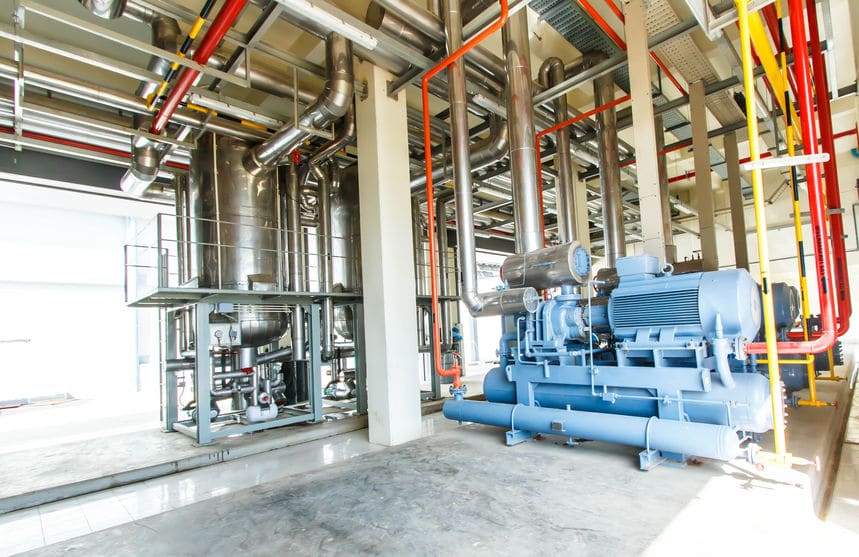
 Finding effortless parts integration should not be an issue. Knowing the chiller interior elements and out may assist you with the possible demand for the parts. Service experts at Midwest Parts Center are knowledgeable about the York catalog. Even the
Finding effortless parts integration should not be an issue. Knowing the chiller interior elements and out may assist you with the possible demand for the parts. Service experts at Midwest Parts Center are knowledgeable about the York catalog. Even the  Businesses depend on spare parts as an enhancement to achieve improved results in VSD chiller models. Whenever an industrial or commercial chiller isn’t performing regularly, it’s best to presume that service might be critical. First, get in touch with a company tech to request a review of your heating system apparatus. The more that minor matters last, the more troublesome an issue is going to be. Also, damaged chiller pieces could cause serious harm to a unit. If you become aware of gaps in the heating system, odd sounds, or increased energy expenses, your chiller may need repair.
Businesses depend on spare parts as an enhancement to achieve improved results in VSD chiller models. Whenever an industrial or commercial chiller isn’t performing regularly, it’s best to presume that service might be critical. First, get in touch with a company tech to request a review of your heating system apparatus. The more that minor matters last, the more troublesome an issue is going to be. Also, damaged chiller pieces could cause serious harm to a unit. If you become aware of gaps in the heating system, odd sounds, or increased energy expenses, your chiller may need repair.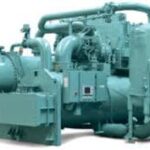 Midwest Parts Center is the prime selection for the customers who are searching for the York brand. We service commercial and industrial facilities in the region and further. We also work together with our parts network to receive the most useful elements for HVAC applications. Contact us to learn how we can help with your chiller parts.
Midwest Parts Center is the prime selection for the customers who are searching for the York brand. We service commercial and industrial facilities in the region and further. We also work together with our parts network to receive the most useful elements for HVAC applications. Contact us to learn how we can help with your chiller parts. 
 Finding effortless parts integration should not be an issue. Knowing the chiller interior elements and out may assist you with the possible demand for the parts. Your support tech will also have the ability to let you know exactly what parts are needed for replacement or repair. Even the
Finding effortless parts integration should not be an issue. Knowing the chiller interior elements and out may assist you with the possible demand for the parts. Your support tech will also have the ability to let you know exactly what parts are needed for replacement or repair. Even the  Businesses depend on spare parts as an enhancement to achieve improved results in VSD chiller models. Whenever an industrial or commercial chiller isn’t performing regularly, it’s best to presume that service might be critical. First, get in touch with a company tech to request a review of your heating system apparatus. The more that minor matters last, the more troublesome an issue is going to be. Also, damaged chiller pieces could cause serious harm to a unit. If you become aware of gaps in the heating system, odd sounds, or increased energy expenses, your chiller may need repair.
Businesses depend on spare parts as an enhancement to achieve improved results in VSD chiller models. Whenever an industrial or commercial chiller isn’t performing regularly, it’s best to presume that service might be critical. First, get in touch with a company tech to request a review of your heating system apparatus. The more that minor matters last, the more troublesome an issue is going to be. Also, damaged chiller pieces could cause serious harm to a unit. If you become aware of gaps in the heating system, odd sounds, or increased energy expenses, your chiller may need repair. of HVAC components. In fact, chillers are intricate machines that are heavy. Of course, the processes ought to be approached closely with assistance from an industry technician. York has designed its model to a high level of efficiency that clients have come to enjoy.
of HVAC components. In fact, chillers are intricate machines that are heavy. Of course, the processes ought to be approached closely with assistance from an industry technician. York has designed its model to a high level of efficiency that clients have come to enjoy.
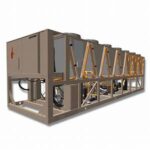 One of the parts that you may need for your York HVAC unit is the
One of the parts that you may need for your York HVAC unit is the 


 Energy-efficient cooling systems are a major factor in commercial and industrial facilities.
Energy-efficient cooling systems are a major factor in commercial and industrial facilities. 
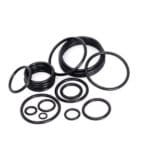

 York VSD Commercial Coolant Replacement: HVAC systems require ongoing upkeep to function properly. Among the types of components needed to maintain the operation of a system is coolant. Coolant is used to protect the parts of a system by acting as an anti-corrosive. The material is also used to prevent build-up so that a climate control system can run efficiently.
York VSD Commercial Coolant Replacement: HVAC systems require ongoing upkeep to function properly. Among the types of components needed to maintain the operation of a system is coolant. Coolant is used to protect the parts of a system by acting as an anti-corrosive. The material is also used to prevent build-up so that a climate control system can run efficiently. 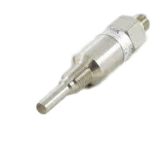 The VSD chiller by York is one of the most efficient models available. The system has been found to reduce energy expenses by as much as 30%. Chillers are cooling systems that are used in a wide range of applications across several different industries. As a result, the equipment must always be reliable. Because the machines are run for extended periods of time, energy consumption is a major concern for facilities that use chillers.
The VSD chiller by York is one of the most efficient models available. The system has been found to reduce energy expenses by as much as 30%. Chillers are cooling systems that are used in a wide range of applications across several different industries. As a result, the equipment must always be reliable. Because the machines are run for extended periods of time, energy consumption is a major concern for facilities that use chillers. 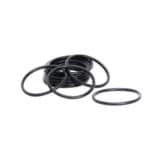 Chillers require maintenance to ensure that systems are making the best use of the energy available. Caring for a cooling system does require professional expertise because the systems are very complex. Handling a chiller’s repairs means that technicians must have access to a wide scope of parts, including consumables. Every component plays a critical role in protecting a chiller from damage to deliver the anticipated level of performance desired. Contact us to find out how we can help with maintenance parts for your
Chillers require maintenance to ensure that systems are making the best use of the energy available. Caring for a cooling system does require professional expertise because the systems are very complex. Handling a chiller’s repairs means that technicians must have access to a wide scope of parts, including consumables. Every component plays a critical role in protecting a chiller from damage to deliver the anticipated level of performance desired. Contact us to find out how we can help with maintenance parts for your